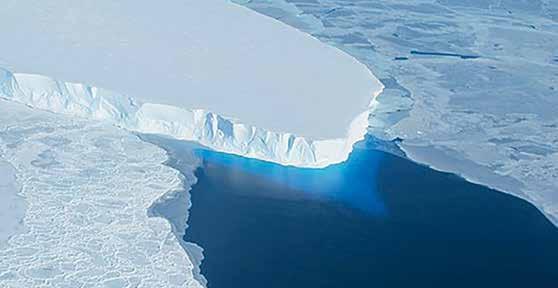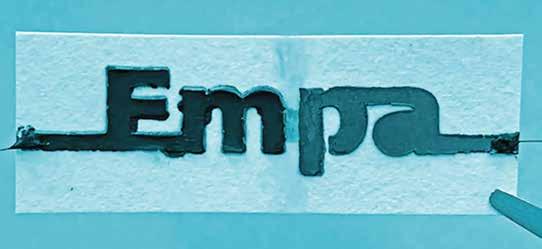
3 minute read
Seniors Avoid the Hospital With Nature
New research has found that exposure to natural environments may reduce the risk of hospitalization for older adults with Alzheimer’s disease, related dementias and Parkinson’s disease. The cohort study included approximately 62 million Medicare beneficiaries aged 65 years or older that lived in the contiguous United States from 2000 to 2016. Researchers looked at ZIP-Code-level greenness, percentages of park cover and blue space (water) cover, as well as hospitalizations. They found that exposure to greenness, park cover and blue space cover reduced hospitalizations for patients with Parkinson’s. Greenness—but not park or blue space cover—was associated with a lower risk of hospitalization due to Alzheimer’s disease and related dementias.
Water immersion during labor is an increasingly popular birthing option for healthy women that experience a straightforward pregnancy, labor spontaneously at full term and plan to give birth in a midwifery-led care setting. The process involves immersion in a birth pool to achieve relaxation and pain relief during the first and possibly part of the second stage of labor. The mother exits the pool for the actual birth, allowing the infant to emerge outside of the water. This method is different from a water birth, during which the woman remains in the pool as the infant emerges into the water and is then brought to the surface to initiate breathing.
Advertisement
In a new systematic review and meta-analysis published in BMJ Open, researchers compared the interventions and outcomes of water immersion, water birth and no-water-immersion births. After reviewing 36 studies encompassing the experiences of about 150,000 women, researchers found that water immersion significantly reduced the use of epidurals, injected opioids, episiotomy, maternal pain and postpartum hemorrhage. There was also an increase in maternal satisfaction and improved odds of an intact perineum with water immersion. Water births were associated with increased odds of the tearing of the umbilical cord from the placenta, making delivery of the placenta difficult, although the absolute risk remained low (4.3 versus 1.3 per 1,000). There were no differences in any other identified neonatal outcomes.
Ashwagandha May Improve Women’s Sexual Experience
Poor sexual function affects about 40 percent of women and may worsen their quality of life. Ashwagandha (Withania somnifera) is a known adaptogenic herb that has been reported to improve sexual satisfaction, sleep and quality of life in women. Researchers in Mumbai set out to evaluate the efficacy and safety of standardized ashwagandha root extract in improving sexual function in healthy females.
A randomized, placebo-controlled study of 80 women between the ages of 18 and 50 with hypoactive sexual desire disorder and no other hormonal imbalances were given either 300 milligrams of ashwagandha root extract twice daily or a placebo for eight weeks. Sexual function, quality of life and safety were assessed. In comparison to the control group, the ashwagandha participants experienced statistically significant improvements in sexual desire, arousal and satisfaction; improved lubrication and orgasm; and less pain.
Scientists Invent Battery Made of Paper
Scientists have developed a water-activated, disposable, paper battery, according to a proof-of-concept study published in Scientific Reports The developers believe that their invention could be used to power a variety of low-power, single-use electronics, such as smart packaging, environmental sensors and medical diagnostic devices, thereby reducing their environmental impact.
The single-cell battery consists of one square centimeter of paper treated with salts. One side is printed with ink containing graphite flakes, which serves as the positive terminal, and the other side is printed with ink containing zinc powder to create the negative terminal. Another layer of ink containing graphite flakes and carbon black is applied over that, linking the battery’s positive and negative ends to two wires secured by wax.
When a few drops of water are added to the paper, the salts dissolve, releasing charged ions that spread across the paper to activate the battery. In tests, researchers were able to reach a stable 1.2 volts. (The voltage of a standard AA alkaline battery is 1.5 volts.) The battery’s performance decreased significantly after an hour when the paper dried. However, after two more drops of water were added, the battery maintained 0.5 volts for an additional hour.
Exploring the Doomsday Glacier
Roughly measuring the size of Florida, the Thwaites Glacier is one of the most rapidly melting ice formations in Antarctica, having retreated more than eight miles since the 1990s. Scientists refer to it as the “doomsday glacier” due to concerns about its collapse, which could raise global sea levels by more than a meter, causing devastation along coastal cities and communities.
According to two papers published in the journal Nature, researchers are learning more about the driving forces behind the glacier’s rapid retreat, thanks in part to a robot deployed through a 600-meter-deep borehole in the glacier. Although melting has increased beneath the ice shelf, the current melt rate is slower than many computer models had estimated. A layer of fresh water between the bottom of the ice shelf and the ocean below slows the rate of melting along flat parts of the shelf.

Scientists discovered that the melting had produced a stepped topography across the bottom of the ice shelf, resembling a staircase, as well as cracks in the ice where rapid melting was taking place. “Our results are a surprise, but the glacier is still in trouble,” says Dr. Peter Davis, oceanographer at the British Antarctic Survey and lead author of one of the papers.










